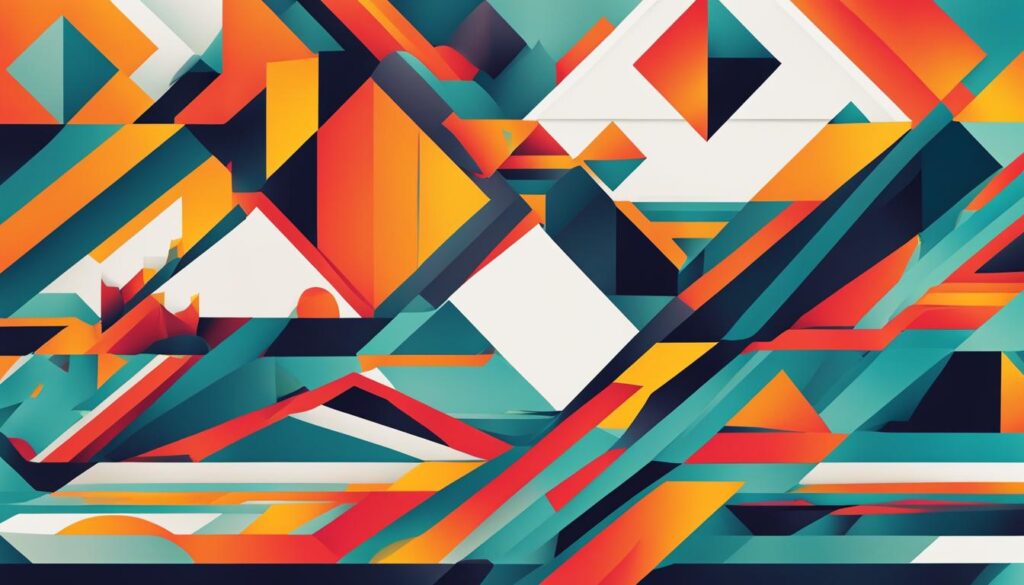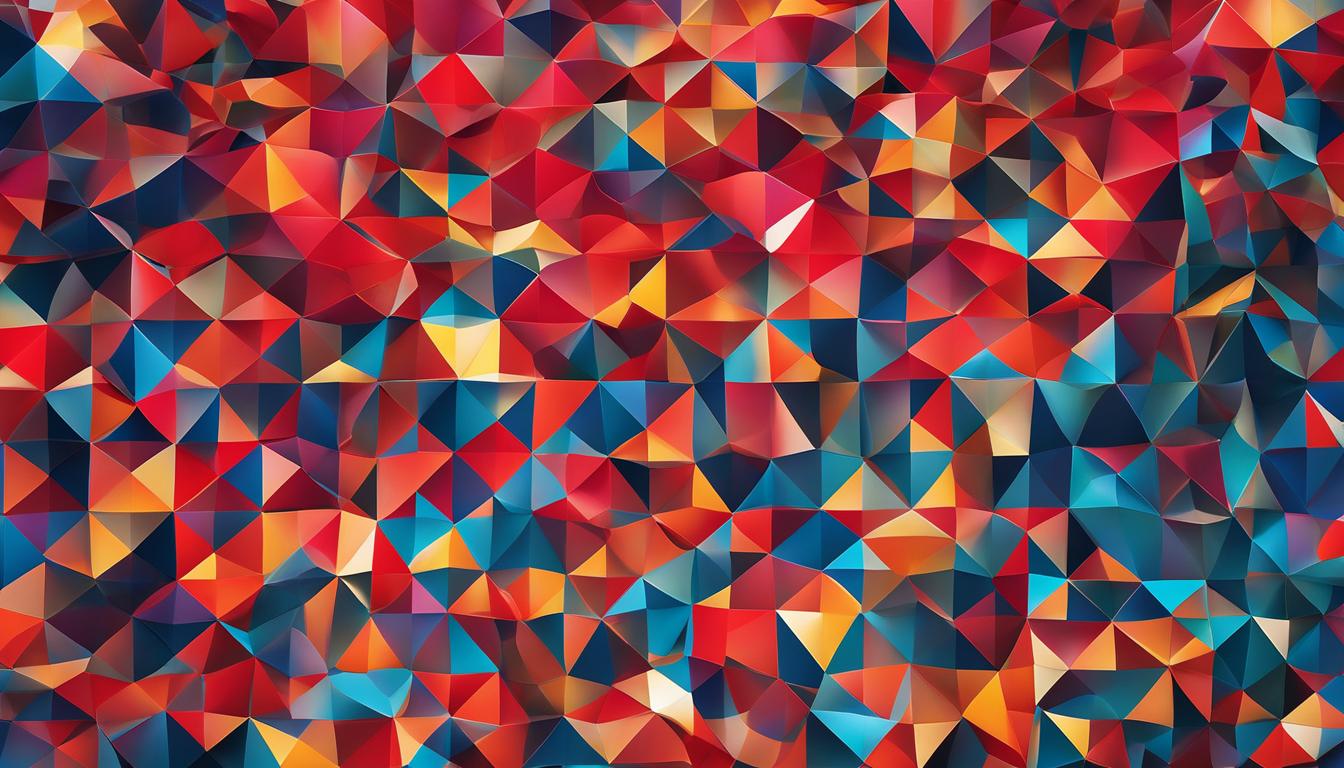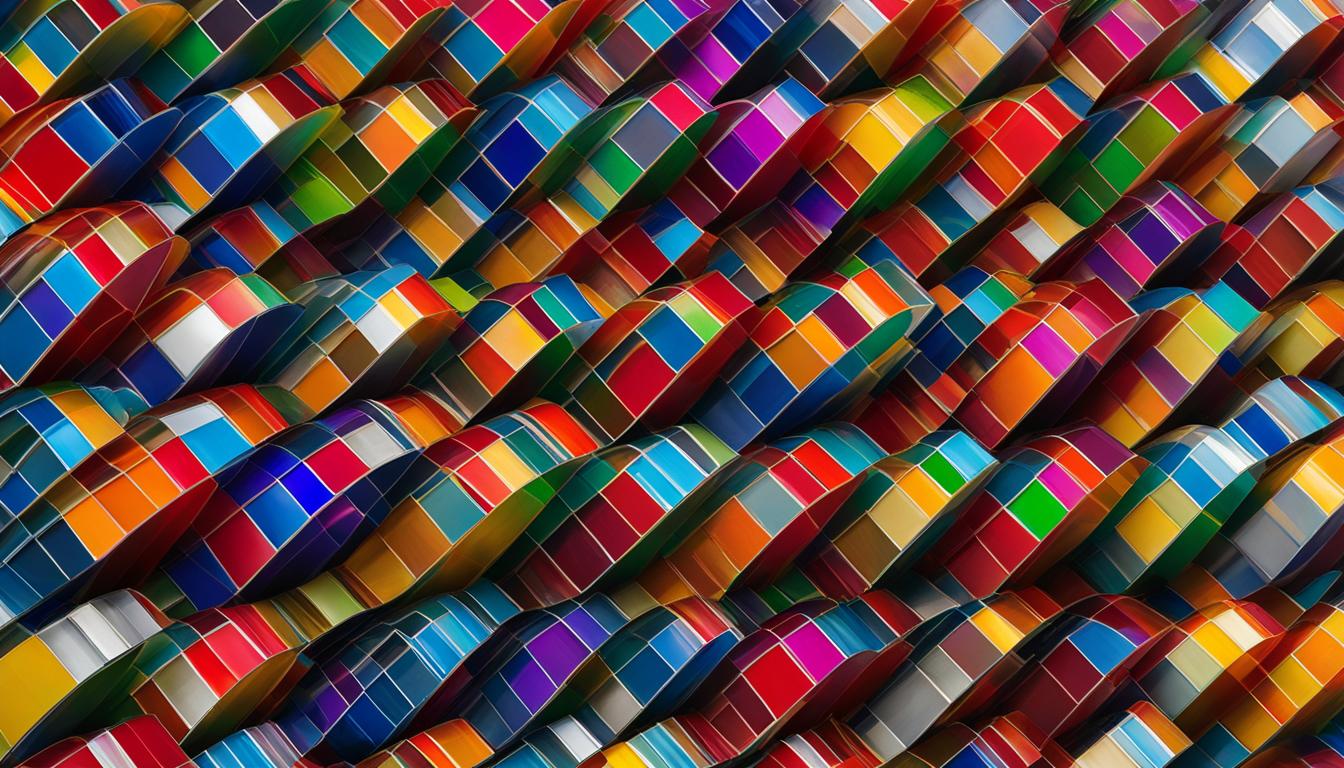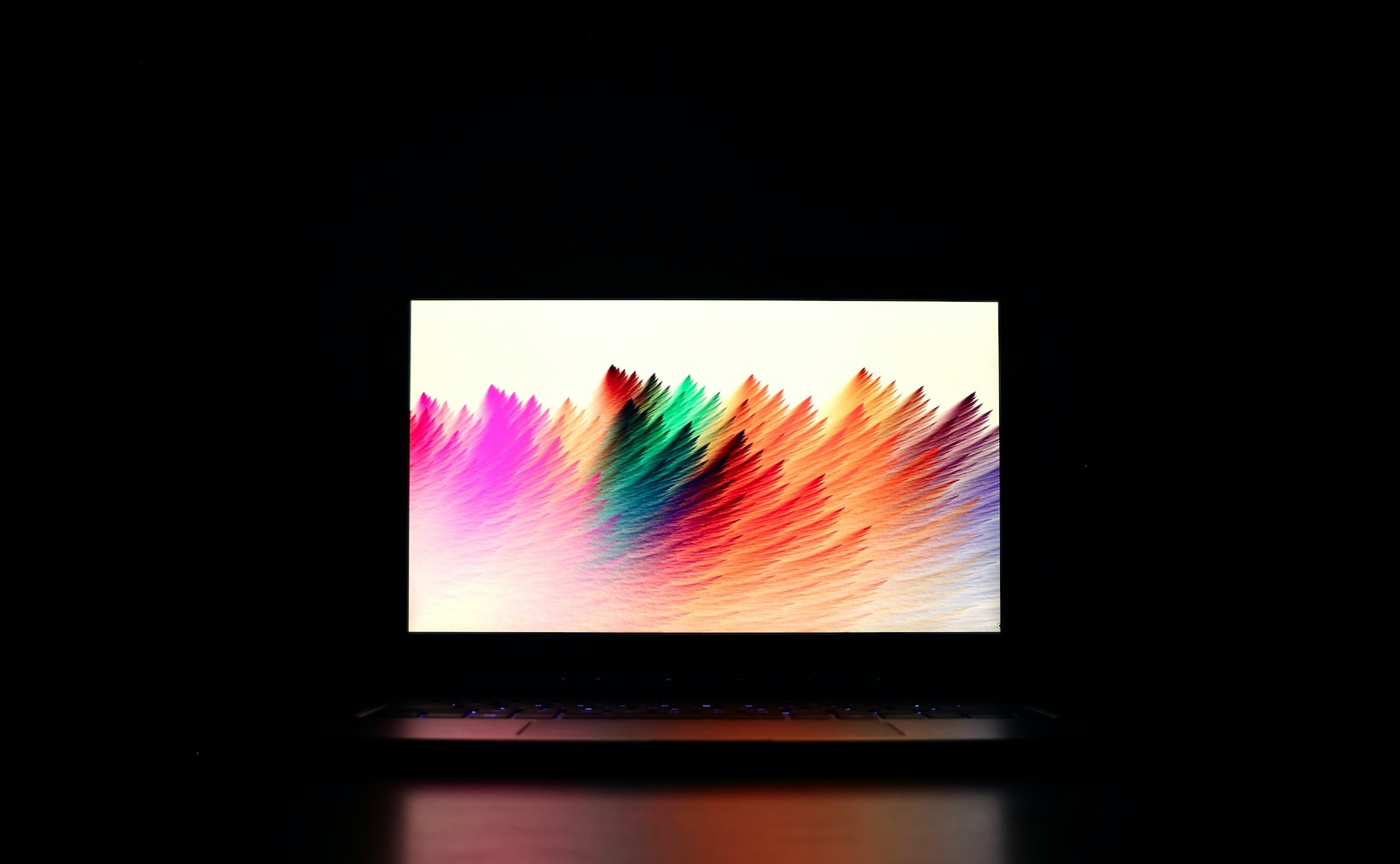In the world of visual design, two types of graphics dominate the digital landscape: raster and vector. Understanding the differences between these two formats is crucial for designers and visual communicators. In this article, we will explore the distinctions between raster and vector graphics, highlighting their unique characteristics and use cases.
Key Takeaways:
- Raster images are composed of individual pixels, while vector graphics are made up of mathematical paths.
- Raster images are ideal for photo editing with complex color gradients, while vector graphics are best for logos and illustrations.
- Raster images cannot be scaled without losing quality, but vector graphics are resolution-independent and can be scaled infinitely.
- Common file formats for raster images include JPG, GIF, and PNG, while vector images use AI, CDR, and SVG formats.
- The choice between raster and vector graphics depends on the specific project and its intended use.
What is a Raster Image?
Raster images, also known as bitmaps, are composed of individual pixels of color. Each color pixel contributes to the overall image, similar to pointillist paintings that are made up of individually-colored dots of paint. Raster images are commonly created by digital cameras and are widely used in photography and graphic design. They are capable of capturing complex color gradients and are ideal for photo editing.
Some common file types for raster images include JPG, GIF, and PNG. These formats allow for efficient storage and transmission of raster images while maintaining the quality of the original photo. JPG is a popular choice for photographs, GIF supports animations and transparency, and PNG is widely used for web graphics due to its lossless compression.
To visually understand the composition of a raster image, refer to the example below:
| File Type | Description |
|---|---|
| JPG | Commonly used for photographs and web graphics. Supports lossy compression. |
| GIF | Suitable for animations, simple graphics, and images with transparency. Supports lossless compression. |
| PNG | Widely used for web graphics and images that require high quality and transparency. Supports lossless compression. |
In summary, raster images are composed of individual pixels of color and are commonly used for photography and photo editing. They can have complex color gradients and are saved in formats such as JPG, GIF, and PNG. Understanding the characteristics of raster images is essential for designers and photographers when choosing the appropriate format for their projects.
What is a Vector Image?
A vector image is a type of graphic that is created using scalable vector graphics (SVG). Unlike raster graphics, which are made up of pixels, vector images are comprised of paths defined by mathematical formulas. These paths are represented by lines and curves, which give vector images their distinct sharpness and clarity.
Vector graphics are resolution-independent, meaning they can be scaled up or down without any loss in quality or detail. This makes them ideal for designs that require resizing, such as logos, icons, and illustrations. Additionally, vector images have smaller file sizes compared to raster images, as they rely on mathematical formulas rather than storing individual pixels.
Creation and Editing of Vector Images
There are several software programs available for creating and editing vector images. Some of the most popular ones include Adobe Illustrator, CorelDraw, and InkScape. These programs offer a range of tools and features that allow designers to manipulate paths, adjust colors, and add text to vector graphics. With their intuitive interfaces and powerful capabilities, these software programs have become industry standards for vector image creation and editing.

Vector images are widely used in various industries, such as graphic design, advertising, and web development. Their scalability and versatility make them suitable for a wide range of applications, from print materials like brochures and business cards to digital media like websites and mobile apps. Whether it’s creating a clean and sharp logo or designing an intricate illustration, vector graphics offer the flexibility and precision required to bring creative visions to life.
Differences Between Raster and Vector Graphics
When it comes to graphics, there are significant differences between raster and vector formats. One of the main distinctions is the way they represent images: raster graphics are composed of pixels, while vector graphics are based on mathematical equations.
With raster images, each pixel contains color information, resulting in detailed and true-to-life graphics. This makes them ideal for photographs and images with complex color blends, shading, and shadows. However, raster graphics cannot be scaled without sacrificing quality, as increasing their size leads to pixelation and loss of clarity.
On the other hand, vector graphics use mathematical formulas to define paths and shapes. This allows them to be infinitely scaled without any loss in quality. Vector graphics excel at producing sharp lines and solid colors, making them perfect for logos, illustrations, and designs that require clean and precise elements. Programs like Adobe Illustrator, CorelDraw, and InkScape are commonly used to create and edit vector images.
| Aspect | Raster Graphics | Vector Graphics |
|---|---|---|
| Composition | Composed of pixels | Based on mathematical equations |
| Scalability | Cannot be scaled without sacrificing quality | Infinitely scalable without any loss in quality |
| Graphics Style | Capable of rendering true-to-life graphics with complex color blends, shading, and shadows | Better suited for designs with simple, solid colors and sharp lines |
| File Types | JPG, GIF, and PNG | AI, CDR, and SVG |
| File Size | Relatively larger due to pixel-based representation | Smaller due to reliance on mathematical formulas |
When to Use Raster or Vector
Understanding the appropriate use of raster and vector graphics is crucial for designers and visual communicators. While raster images are best suited for photos, vector images are ideal for logos and illustrations. Let’s explore when each format should be used.
Raster Images for Photos
Raster images excel at capturing the intricate details and complex color blends found in photographs. Whether you’re editing a portrait, capturing vibrant landscapes, or enhancing product images, raster graphics are the go-to choice. The individual pixels of a raster image ensure high-quality rendering of real-life images, making it the preferred format for photography-oriented projects.
Vector Graphics for Logos and Illustrations
When it comes to logos, illustrations, and designs with simple, solid colors, vector graphics are the clear winner. Vector images, composed of paths and mathematical formulas, offer scalability without sacrificing quality. This makes them perfect for creating crisp and sharp lines, ensuring that logos and illustrations appear equally impressive whether they are scaled down for a business card or blown up for a billboard.
In projects that require a combination of both raster and vector images, like brochures or online catalog printing, these formats complement each other. A brochure may feature a corporate logo designed in vector format to maintain its integrity at any size, while including high-resolution raster images to showcase products or real-life visuals. The decision to use raster or vector ultimately depends on the specific project and its intended purpose.
| Application | Recommended Format |
|---|---|
| Photos | Raster |
| Logos and Illustrations | Vector |
| Brochures and Online Catalog Printing | Combination of Raster and Vector |
By understanding the strengths and weaknesses of raster and vector graphics, designers can make informed decisions about which format to use, depending on the project requirements. Whether it’s capturing the realism of a photograph or ensuring the scalability of a logo, choosing the appropriate format is essential for visual impact.
Comparison of Raster and Vector Graphics
When comparing raster and vector graphics, several key differences emerge. Firstly, raster images are composed of pixels, which are small dots of color that together form the complete image. In contrast, vector graphics are created using mathematical formulas to define paths and shapes. This fundamental distinction in composition has significant implications for the scalability and detail of the images.
Raster images, due to their reliance on pixels, cannot be scaled without losing quality. When enlarged, the individual pixels become more visible, resulting in a loss of sharpness and clarity. On the other hand, vector graphics can be infinitely scaled without any loss in quality or detail. Because vectors are based on mathematical equations that define the paths, they do not rely on fixed pixel dimensions. This makes vector graphics ideal for designs that need to be resized or adapted for various purposes, such as logos or illustrations.
Another important difference between raster and vector graphics is their ability to render true-to-life graphics. Raster images excel in capturing complex color blends, shading, and shadows, making them ideal for photographs or images that require fine details. In contrast, vector graphics are better suited for designs that have simpler, solid colors. The mathematical formulas used in vector graphics prioritize clean lines and shapes, making them perfect for logos, icons, and illustrations.
| Aspect | Raster Graphics | Vector Graphics |
|---|---|---|
| Composition | Composed of pixels | Comprised of mathematical formulas |
| Scalability | Cannot be enlarged without losing quality | Infinitely scalable without quality loss |
| Graphic Detail | Capable of rendering complex color blends and fine details | Suited for designs with simple, solid colors and clean lines |
| File Types | JPG, GIF, PNG | AI, CDR, SVG |
When considering the file types used for raster and vector graphics, raster images commonly employ formats such as JPG, GIF, and PNG. These file types are optimized for storing and displaying pixel-based images. In contrast, vector graphics utilize formats such as AI, CDR, and SVG, which are specifically designed to preserve and define the mathematical formulas that make up the vector images.
In summary, raster images and vector graphics differ in their composition, scalability, and file types. Raster images are made up of pixels and are best suited for capturing fine details in photographs, while vector graphics are created using mathematical formulas and are ideal for designs that require scalability and clean lines. Understanding these differences is crucial for designers and visual communicators to choose the appropriate format for their specific projects.
Conclusion
In conclusion, the differences between raster and vector graphics are significant and important for designers and visual communicators to understand. Raster images, composed of pixels, are ideal for capturing the complex color blends and details of photos. On the other hand, vector graphics, based on mathematical equations, are perfect for logos and illustrations with sharp lines and simple, solid colors.
One key distinction is scalability. Raster images cannot be scaled without sacrificing quality, while vector graphics can be infinitely scaled without any loss in quality or detail. This makes vector graphics highly versatile in various applications.
Additionally, the file types used for raster and vector images differ. Raster images commonly use JPG, GIF, and PNG formats, which result in larger file sizes. Vector images, on the other hand, utilize AI, CDR, and SVG formats, resulting in smaller file sizes due to their reliance on mathematical formulas.
In summary, understanding the differences between raster and vector graphics is essential in choosing the appropriate format for different projects. By recognizing the strengths and limitations of each, designers can create visually compelling compositions that meet the specific requirements of their intended use.
FAQ
How do raster and vector graphics differ?
Raster images are composed of pixels, while vector graphics are based on mathematical equations.
What is a raster image?
A raster image, also known as a bitmap, is composed of individual pixels of color. It is similar to a pointillist painting, with each pixel contributing to the overall image. Raster images are ideal for photo editing and can have complex color gradients. Common file types for raster images are JPG, GIF, and PNG.
What is a vector image?
A vector image is comprised of paths with mathematical formulas. Unlike raster graphics, vector images are resolution-independent, meaning they can be scaled infinitely without any loss in quality or detail. They have sharp lines and are best suited for logos and illustrations. Programs like Adobe Illustrator, CorelDraw, and InkScape are commonly used for creating and editing vector images.
Are there any differences between raster and vector graphics?
Yes, there are significant differences between raster and vector graphics. Raster images cannot be scaled without losing quality, while vector graphics can be infinitely scaled without any loss in quality. Raster images are capable of rendering true-to-life graphics, including complex color blends, shading, and shadows, while vectors are better suited for designs with simple, solid colors. The most common file types for raster images are JPG, GIF, and PNG, while vector images use AI, CDR, and SVG formats.
When should I use raster or vector graphics?
Raster images are best suited for photos, as they can capture complex color gradients and details. On the other hand, vector images are ideal for logos and illustrations, as they can be scaled infinitely without any loss in quality. Many projects combine both raster and vector images, such as brochures that include a corporate logo (vector) and a photo (raster). The choice between raster and vector depends on the specific project and its intended use.
What is the comparison between raster and vector graphics?
Raster images are composed of pixels, while vector graphics are based on mathematical equations. Raster images cannot be scaled without losing quality, while vector graphics can be infinitely scaled without any loss in quality. Raster images are capable of rendering true-to-life graphics, including complex color blends, shading, and shadows, while vectors are better suited for designs with simple, solid colors. The most common file types for raster images are JPG, GIF, and PNG, while vector images use AI, CDR, and SVG formats.
 Skip to main content
Skip to main content


